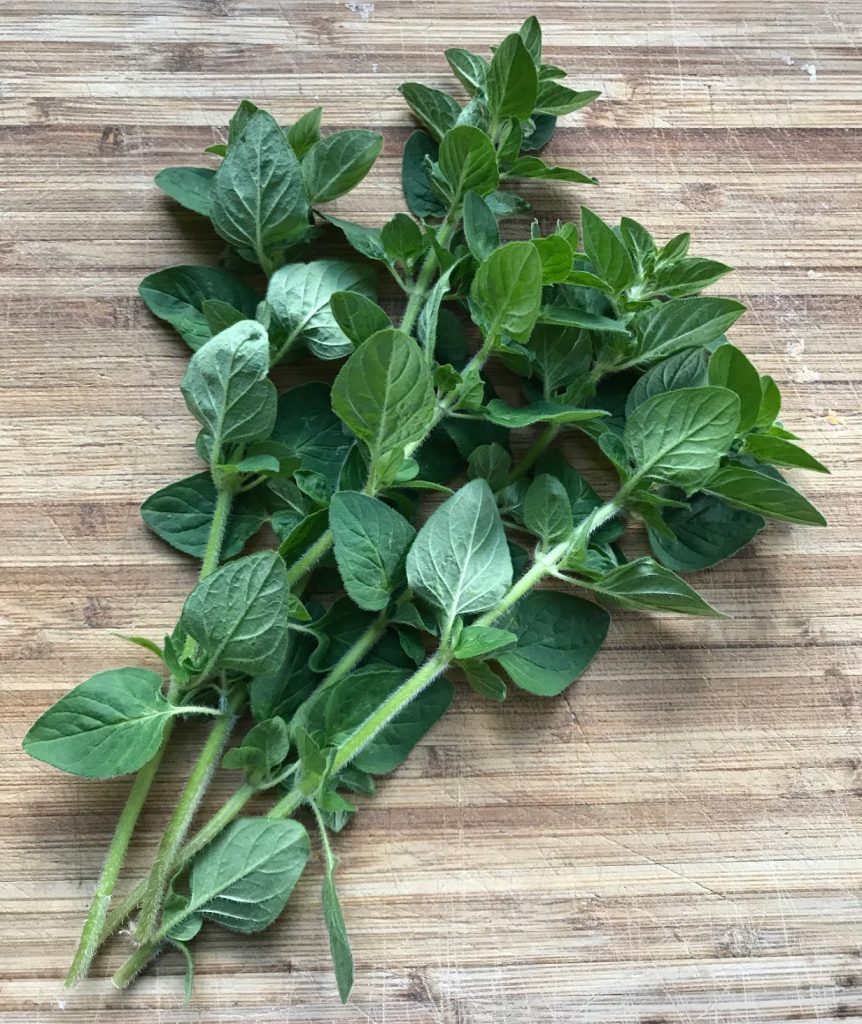Introduction

Greek Oregano and Italian Oregano are two popular varieties of oregano that showcase distinct flavor profiles. With their origins in the Mediterranean region, these herbs have been widely used in culinary traditions for centuries. While Italian Oregano is known for its robust and intense flavor, Greek Oregano offers a harmonious blend of pungency and warmth. In this article, we will explore the flavor profiles of both varieties and delve into their best culinary uses. Whether you are a seasoned chef or an avid home cook, understanding the differences between Greek Oregano and Italian Oregano will elevate your dishes to new heights. So let’s dive into the world of these aromatic herbs and discover their unique characteristics.
Brief Overview Of Greek Oregano And Italian Oregano
Greek oregano and Italian oregano are two popular varieties of oregano that originate from the Mediterranean region. Greek oregano, also known as Origanum vulgare hirtum, is known for its strong and robust flavor. It has a pungent aroma and a slightly bitter taste, making it ideal for savory dishes. On the other hand, Italian oregano, also known as Origanum vulgare, has a milder and sweeter flavor profile. It offers a delicate balance of earthiness and warmth, making it versatile in a variety of culinary applications. Both varieties of oregano add a distinctive and aromatic touch to dishes, enhancing the overall flavor profile.
Greek Oregano: Flavor Profile
Greek oregano is known for its distinctive and robust flavor profile. It has a pungent aroma and a slightly bitter taste, adding a bold and powerful punch to dishes. The flavor of Greek oregano is intense and peppery, with hints of mint and delicate floral undertones. Its strong and complex flavor makes it ideal for savory dishes such as grilled meats, roasted vegetables, and marinades. Greek oregano adds depth and authenticity to Mediterranean-inspired recipes, elevating the overall taste experience. Its bold flavor profile is what sets it apart from other varieties of oregano, making it a favorite among chefs and home cooks alike.
Distinctive Characteristics Of Greek Oregano

Greek oregano is known for its distinctive and robust flavor profile. It has a pungent aroma and a slightly bitter taste, adding a bold and powerful punch to dishes. The flavor of Greek oregano is intense and peppery, with hints of mint and delicate floral undertones. Its strong and complex flavor makes it ideal for savory dishes such as grilled meats, roasted vegetables, and marinades. Greek oregano adds depth and authenticity to Mediterranean-inspired recipes, elevating the overall taste experience. Its bold flavor profile is what sets it apart from other varieties of oregano, making it a favorite among chefs and home cooks alike.
Best Culinary Uses For Greek Oregano
Greek oregano is highly versatile and adds a bold and flavorful twist to various dishes. Its robust and peppery taste is ideal for Mediterranean-inspired recipes. Here are some of the best culinary uses for Greek oregano:
- Grilled meats: Greek oregano complements the smoky flavors of grilled meats like lamb, beef, and chicken, giving them an authentic Mediterranean touch.
- Roasted vegetables: Sprinkle Greek oregano over roasted vegetables, such as tomatoes, zucchini, and eggplant, to enhance their natural sweetness and add a delightful herbal note.
- Marinades and dressings: Greek oregano adds depth and complexity to marinades and salad dressings, providing a burst of flavor to your favorite dishes.
- Pizza and pasta: Sprinkle Greek oregano on pizza or pasta dishes to elevate their taste and bring out the richness of other ingredients.
- Soups and stews: Greek oregano adds a herbal and aromatic element to soups and stews, enhancing their overall flavor profile.
In summary, Greek oregano is a versatile herb that shines in various culinary creations, from grilled meats and roasted vegetables to marinades and soups. Its bold flavor profile enhances the taste of dishes and adds a touch of Mediterranean flair.
Italian Oregano: Flavor Profile
Italian Oregano is known for its unique flavor profile that distinguishes it from other varieties. It has a lighter and more delicate flavor compared to Greek oregano. The taste of Italian oregano is slightly sweeter and less pungent, with subtle notes of citrus and earthiness. It adds a refreshing and aromatic touch to dishes without overpowering the other ingredients. Italian oregano is particularly popular in Italian cuisine, where it enhances the flavors of pasta sauces, pizzas, and roasted vegetables. Its versatile flavor makes it a favorite among chefs and home cooks alike when seeking to add a hint of Mediterranean flair to their dishes.
Unique Flavor Notes Of Italian Oregano

Italian Oregano is known for its distinctive flavor profile that sets it apart from other varieties. It offers a lighter and more delicate taste compared to Greek oregano. Italian oregano has subtle notes of citrus and earthiness, giving it a refreshing and aromatic touch. Its flavor is slightly sweeter, making it a versatile herb that complements a wide range of dishes. Whether it’s used in pasta sauces, pizzas, or roasted vegetables, Italian oregano adds a unique depth of flavor without overpowering the other ingredients. Its complex and refreshing flavor makes it a favorite among chefs and home cooks looking to add a hint of Mediterranean flair.
Popular Dishes Enhanced By Italian Oregano
Italian Oregano is a versatile herb that adds a unique depth of flavor to a variety of dishes. Its distinct flavor notes of citrus and earthiness make it the perfect ingredient to elevate the taste of many Mediterranean-inspired recipes. Some popular dishes that are enhanced by the addition of Italian Oregano include:
- Pasta Sauces: Italian Oregano adds a refreshing and aromatic touch to tomato-based pasta sauces, giving them a burst of flavor and complexity.
- Pizza: Sprinkling Italian Oregano on top of pizza adds a fragrant and savory note, enhancing the overall taste of the dish.
- Roasted Vegetables: Italian Oregano can be used to season and enhance the flavors of roasted vegetables, bringing out their natural sweetness and adding a touch of Mediterranean flair.
- Grilled Meats: Italian Oregano can be used as a dry rub or marinade ingredient for grilled meats, imparting a zesty and herbaceous flavor.
- Garlic Bread: Adding Italian Oregano to garlic bread gives it an extra kick and elevates its flavor.
Overall, Italian Oregano is a valuable herb in the kitchen, enhancing a wide range of dishes with its unique flavor profile.
Aroma And Appearance
Italian Oregano has an enticing aroma that is herbaceous and slightly floral, with hints of citrus and earthiness. Its leaves are small and have a vibrant green color that can vary depending on the growing conditions. The aroma of Greek Oregano, on the other hand, is more intense and robust, with a strong herbal scent and notes of peppery spice. Its leaves are larger and darker in color, often with a slightly fuzzy texture. While both varieties share similarities in appearance, the differences in aroma are what truly distinguish Greek Oregano from Italian Oregano.
Aroma And Visual Differences Between Greek And Italian Oregano

Greek Oregano and Italian Oregano differ in both aroma and appearance. Greek Oregano has a more intense and robust aroma, with strong herbal scents and notes of peppery spice. Its leaves are larger and darker in color, often with a slightly fuzzy texture. On the other hand, Italian Oregano has an enticing aroma that is herbaceous and slightly floral, with hints of citrus and earthiness. Its leaves are smaller and have a vibrant green color. These differences in aroma and visual characteristics distinguish Greek Oregano from Italian Oregano, adding unique flavors and aesthetics to culinary creations.
Culinary Uses
When it comes to culinary uses, both Greek and Italian Oregano bring their distinctive flavors to a variety of dishes.
Greek Oregano, with its robust and peppery flavor, is often used in Mediterranean and Greek cuisine. It pairs well with grilled meats, roasted vegetables, and tomato-based dishes like pizzas and pasta sauces. Its intense aroma and taste also make it a popular choice for marinades and dressings.
Italian Oregano, on the other hand, with its herbaceous and slightly floral notes, is commonly used in Italian cuisine. It enhances the flavors of pasta dishes, soups, sauces, and grilled vegetables. It is also a key ingredient in classic Italian dishes like spaghetti alla puttanesca and margherita pizza.
Overall, Greek and Italian oregano add an authentic Mediterranean touch to any dish, elevating the flavors and transporting your taste buds to the sun-drenched shores of the Mediterranean.
Comparison Of How Greek And Italian Oregano Are Used In Cooking
Greek and Italian Oregano are both widely used in cooking, but they bring their own unique flavors to a variety of dishes. Greek Oregano is known for its robust and peppery flavor, making it a perfect addition to Mediterranean and Greek cuisine. It pairs well with grilled meats, roasted vegetables, and tomato-based dishes like pizzas and pasta sauces. Italian Oregano, on the other hand, has herbaceous and slightly floral notes that enhance the flavors of pasta dishes, soups, sauces, and grilled vegetables. It is a key ingredient in classic Italian dishes like spaghetti alla puttanesca and margherita pizza. Both varieties add an authentic Mediterranean touch to any dish, elevating the flavors and transporting your taste buds to the sun-drenched shores of the Mediterranean.
Pairing Suggestions For Greek And Italian Oregano Flavors

Greek Oregano and Italian Oregano both have distinct flavor profiles that can enhance a variety of dishes. When it comes to pairing Greek Oregano, its robust and peppery flavor pairs well with grilled meats, roasted vegetables, and tomato-based dishes like pizzas and pasta sauces. For Italian Oregano, its herbaceous and slightly floral notes complement pasta dishes, soups, sauces, and grilled vegetables. Both varieties can also be used to add depth of flavor to marinades and dressings. Whether you’re cooking Mediterranean or Italian cuisine, incorporating the appropriate oregano flavor can elevate your dishes to a whole new level.
Conclusion
In conclusion, Greek Oregano and Italian Oregano each have their own unique flavor profiles that can greatly enhance various dishes. Greek Oregano boasts a robust and peppery flavor, making it a popular choice for grilled meats and tomato-based dishes. On the other hand, Italian Oregano offers a more delicate and herbaceous taste, perfect for pasta dishes and grilled vegetables. While both varieties can be used interchangeably, it’s important to consider personal preferences and the specific flavors you wish to achieve. Whether you choose Greek or Italian Oregano, incorporating these flavors into your cooking can elevate your culinary creations to new heights.
Final Thoughts On Greek Oregano Vs Italian Oregano
In conclusion, Greek Oregano and Italian Oregano each have their own unique flavor profiles that can greatly enhance various dishes. Greek Oregano boasts a robust and peppery flavor, making it a popular choice for grilled meats and tomato-based dishes. On the other hand, Italian Oregano offers a more delicate and herbaceous taste, perfect for pasta dishes and grilled vegetables. While both varieties can be used interchangeably, it’s important to consider personal preferences and the specific flavors you wish to achieve. Whether you choose Greek or Italian Oregano, incorporating these flavors into your cooking can elevate your culinary creations to new heights.
Recommendations For Culinary Applications Of Each Type Of Oregano

Greek Oregano and Italian Oregano are both versatile herbs that can elevate the flavors of many dishes in different ways. For Greek Oregano, its robust and peppery flavor makes it an excellent choice for grilled meats, tomato-based dishes, and Mediterranean-inspired cuisine. It adds a bold and aromatic punch to dishes like souvlaki, moussaka, and roasted vegetables. On the other hand, Italian Oregano’s delicate and herbaceous taste pairs perfectly with pasta dishes, pizzas, and grilled vegetables. It adds a subtle and aromatic touch, enhancing the flavors of Italian classics like spaghetti Bolognese, margherita pizza, and bruschetta. Whether you choose Greek or Italian Oregano, incorporating these herbs into your culinary creations will undoubtedly take your dishes to the next level.
FAQ About Greek Oregano Vs Italian: Exploring Flavor Profiles
Q: What is the main difference between Greek Oregano and Italian Oregano in terms of flavor?
A: Greek oregano is known for its strong, robust flavor with hints of lemony sharpness, while Italian oregano typically has a milder taste with a slightly sweeter undertone.
Q: Can Greek Oregano and Italian Oregano be used interchangeably in recipes?
A: Yes, they can be used interchangeably in most recipes. However, it’s essential to consider the intensity of flavor you desire, as Greek oregano might overpower certain delicate dishes compared to Italian oregano.
Q: Which dishes are better suited for Greek Oregano, and which for Italian Oregano?
A: Greek oregano is ideal for dishes that require a bold, assertive flavor, such as grilled meats, stews, and marinades. Italian oregano is more suitable for milder dishes like pasta sauces, pizzas, and salads.
Q: Are there any differences in aroma between Greek and Italian Oregano?
A: Yes, Greek oregano is known for its strong, pungent aroma, often described as earthy and peppery. Italian oregano, on the other hand, has a more subtle scent with floral and slightly sweet notes.
Q: Do Greek Oregano and Italian Oregano have distinct appearances?
A: While both varieties belong to the mint family and have similar-looking leaves, Greek oregano tends to have smaller and darker leaves compared to Italian oregano. The stems of Greek oregano are also usually more woody.
Q: Which variety of Oregano is more commonly used in Mediterranean cuisine?
A: Both Greek and Italian oregano are widely used in Mediterranean cuisine. However, Greek oregano is favored in Greek dishes such as souvlaki, while Italian oregano is prevalent in Italian classics like pasta dishes and pizzas.

Hot Pot Chinese Restaurant, located in Mechanicsville, MD 20659, is a culinary destination that offers a delightful array of Chinese cuisine. From the cozy ambiance to the delectable dishes, Hot Pot Chinese Restaurant is dedicated to providing an exceptional dining experience for all patrons. Since our establishment, Hot Pot Chinese Restaurant has been committed to serving the finest Chinese food, offering a diverse menu that caters to a wide range of tastes. Whether you’re craving traditional favorites like Kung Pao Chicken and Mongolian Beef or seeking out more adventurous options like Szechuan Spicy Hot Pot, our menu has something to satisfy every craving.